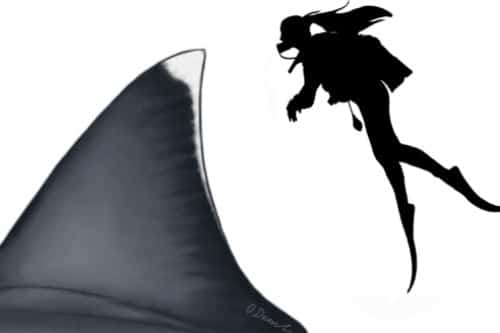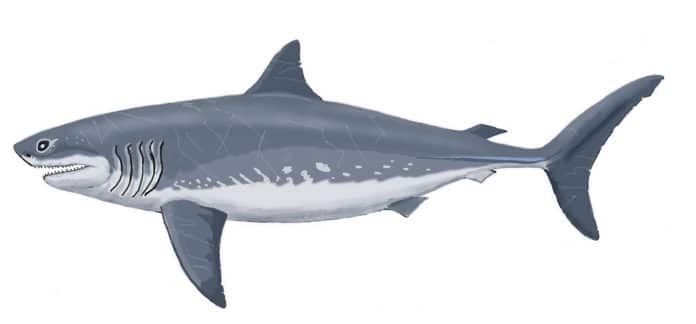The extinct giant shark Otodus megalodon is known almost exclusively from fossilized teeth. Estimates of its body size have been made from its teeth, using the great white shark as the only modern analog. This can be problematic as the two species likely belong to different families, and the position of the †Otodus lineage within Lamniformes is unclear.
A new study by the University of Bristol and Swansea University has now revealed the rest of its body, including fins that are as large as an adult human.
Jack Cooper, who has just completed the MSc in Palaeobiology at the University of Bristol’s School of Earth Sciences, and colleagues from Bristol and Swansea used several mathematical methods to pin down the size and proportions of this monster by making close comparisons to a diversity of living relatives with ecological and physiological similarities to Megalodon.
Shark expert Dr. Catalina Pimiento from Swansea University supervised this project in collaboration with Professor Mike Benton, a paleontologist at Bristol. Dr. Humberto Ferrón of Bristol.
Jack Cooper said: “I have always been mad about sharks. As an undergraduate, I have worked and dived with Great whites in South Africa – protected by a steel cage. It’s that sense of danger and that sharks are such beautiful and well-adapted animals that make them so attractive to study.
“Megalodon was the very animal that inspired me to pursue paleontology in the first place at just six years old, so I was over the moon to get a chance to study it.”
“This was my dream project. But to study the whole animal is difficult, considering that all we have are lots of isolated teeth.”

Dr. Pimiento said: “Megalodon is not a direct ancestor of the Great White but is equally related to other macro predatory sharks such as the Makos, Salmon shark Porbeagle shark, as well as the Great White. We pooled detailed measurements of all five to make predictions about Megalodon.”
Professor Benton added: “Before we could do anything, we had to test whether these five modern sharks changed proportions as they grew up. If, for example, they had been like humans, where babies have big heads and short legs, we would have had some difficulties in projecting the adult proportions for such a huge extinct shark.
“But we were surprised, and relieved, to discover that in fact that the babies of all these modern predatory sharks start as little adults, and they don’t change in proportion as they get larger.”
Jack Cooper said: “This means we could simply take the growth curves of the five modern forms and project the overall shape as they get larger and larger – right up to a body length of 16 meters.”
The results suggest that a 16-meter-long Otodus megalodon likely had a head round 4.65 meters long, a dorsal fin approximately 1.62 meters tall, and a tail around 3.85 meters high.
The reconstruction of the size of Megalodon’s body parts represents a fundamental step towards a better understanding of this giant’s physiology and the intrinsic factors that may have made it prone to extinction.
Journal Reference:
- Cooper, J.A., Pimiento, C., Ferrón, H.G. et al. Body dimensions of the extinct giant shark Otodus megalodon: a 2D reconstruction. Sci Rep 10, 14596 (2020). DOI: 10.1038/s41598-020-71387-y
